Quotidian Encounters
We look. We listen. We smell. We touch. We taste. We navigate the world with our senses. Material qualities of manufactured goods have immanent and often overlooked potential to facilitate positive emotional experiences. By associating the experience of food preparation and consumption with positive emotions and memories, lasting emotional engagement can be achieved and meaningfully transcend the commercial aims of the food product.
Leveraging gestures derived from culinary techniques and traditional food practice, Quotidian Encounters elevates otherwise banal food experiences into gastronomic events.
The project consist on the seven following designs.
v
v
v
MDES Thesis Project
PICK


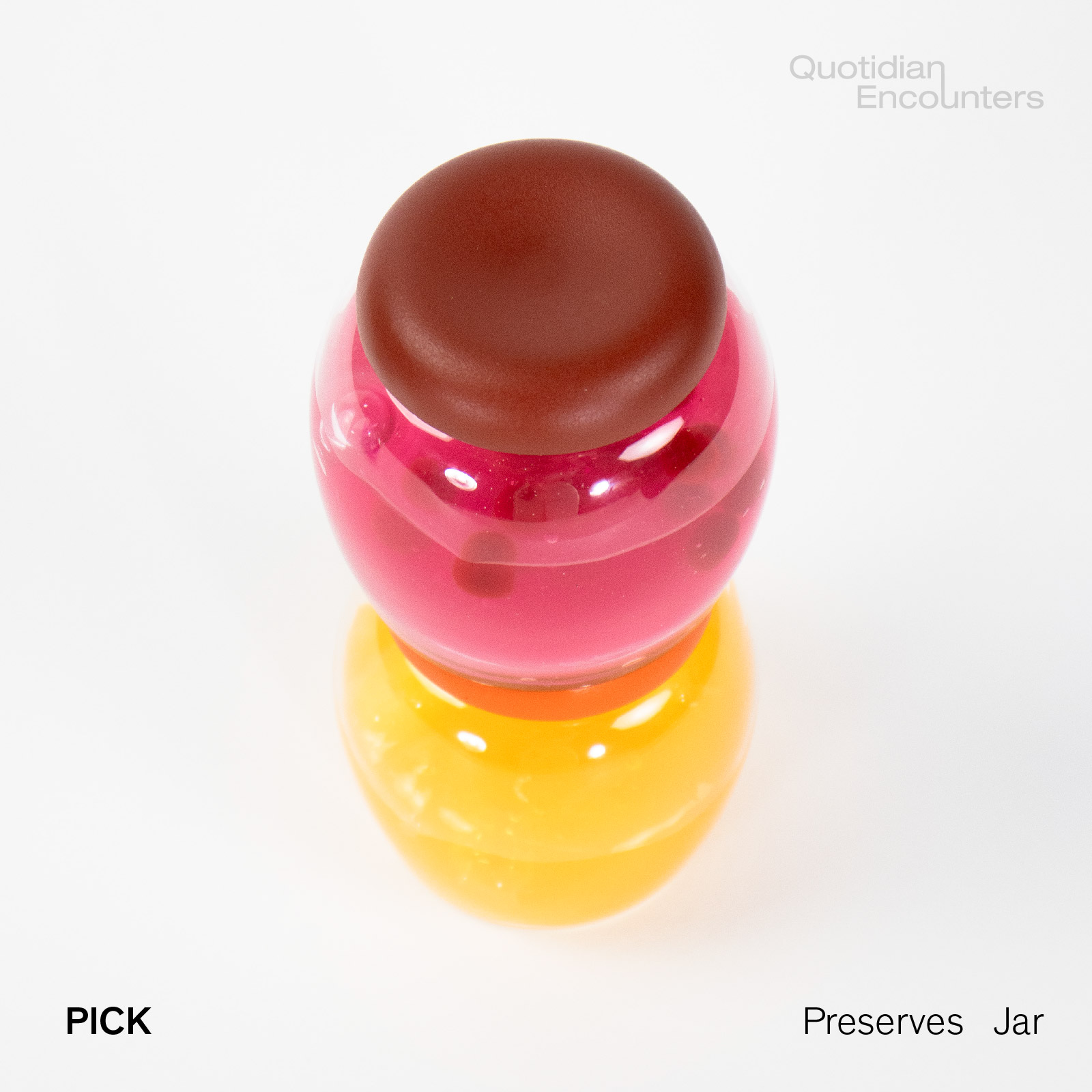
Using the preserves jar as a direct analogy of a whole fruit the voluptuous jar emulates the feeling of picking or rinsing a fruit. While the contoured surface on the cap tactically resembles the dimple on the top and bottom of a piece of fruit. The design provokes a sense of provenance to the eating experience despite how the food content itself was commercially processed.
HOLD
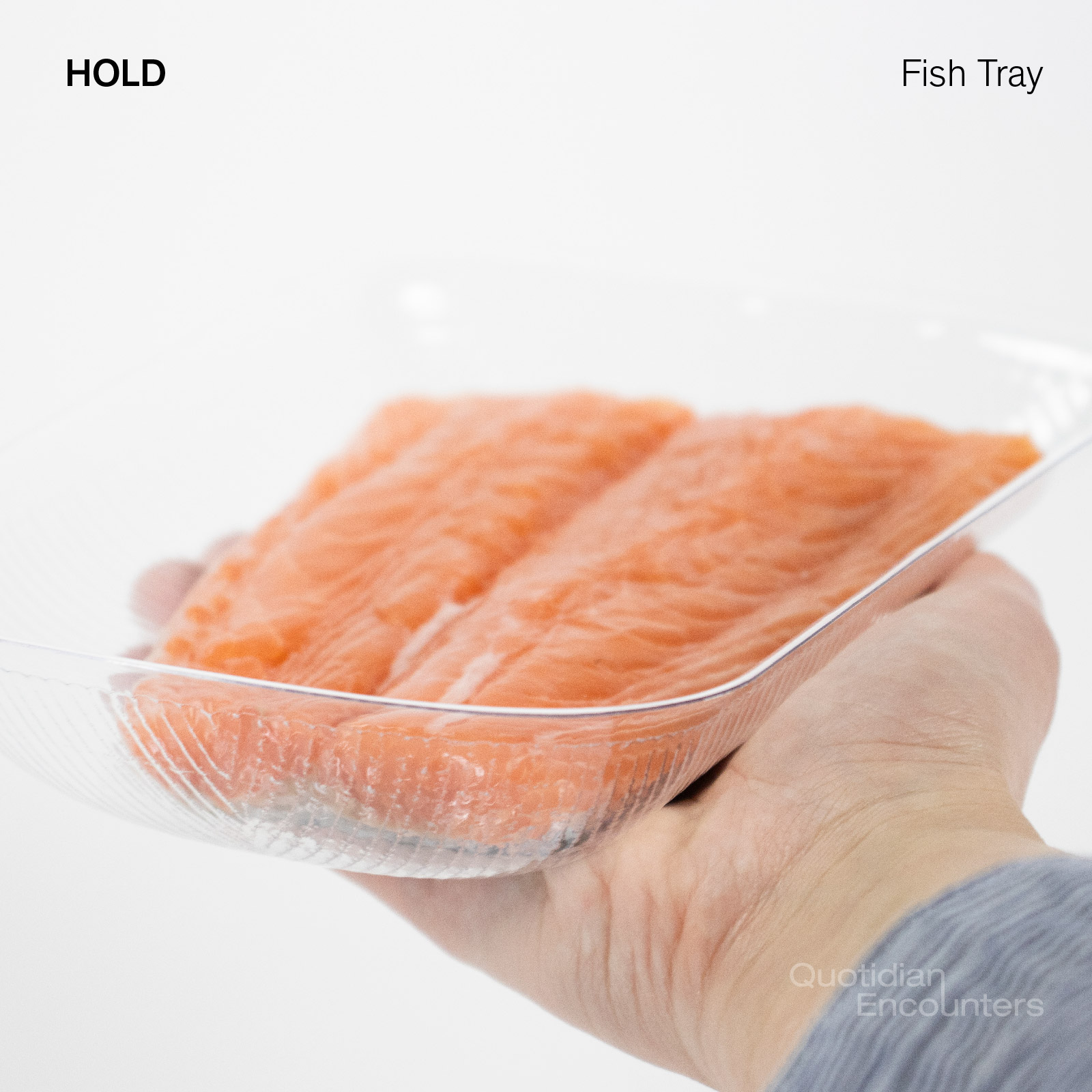
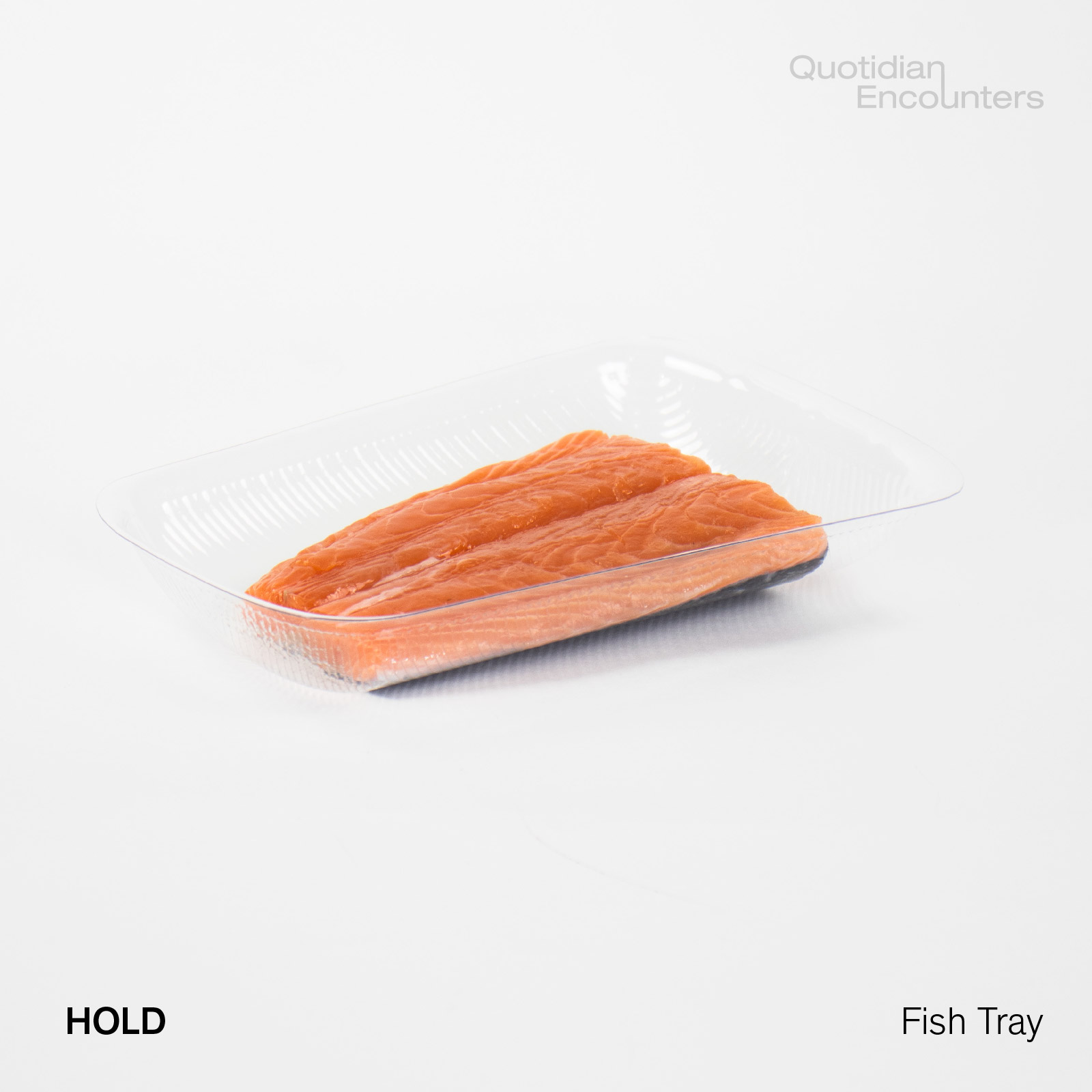
Driven by the contrasting tactical experience between the texture of fish flesh and its often rigid geometric plastic tray, the design adopts a seamless curved base, an overall tapered form, and subtle diagonal texture. The features represent the fish's anatomy and the fat layers in the flesh.
BLOOM
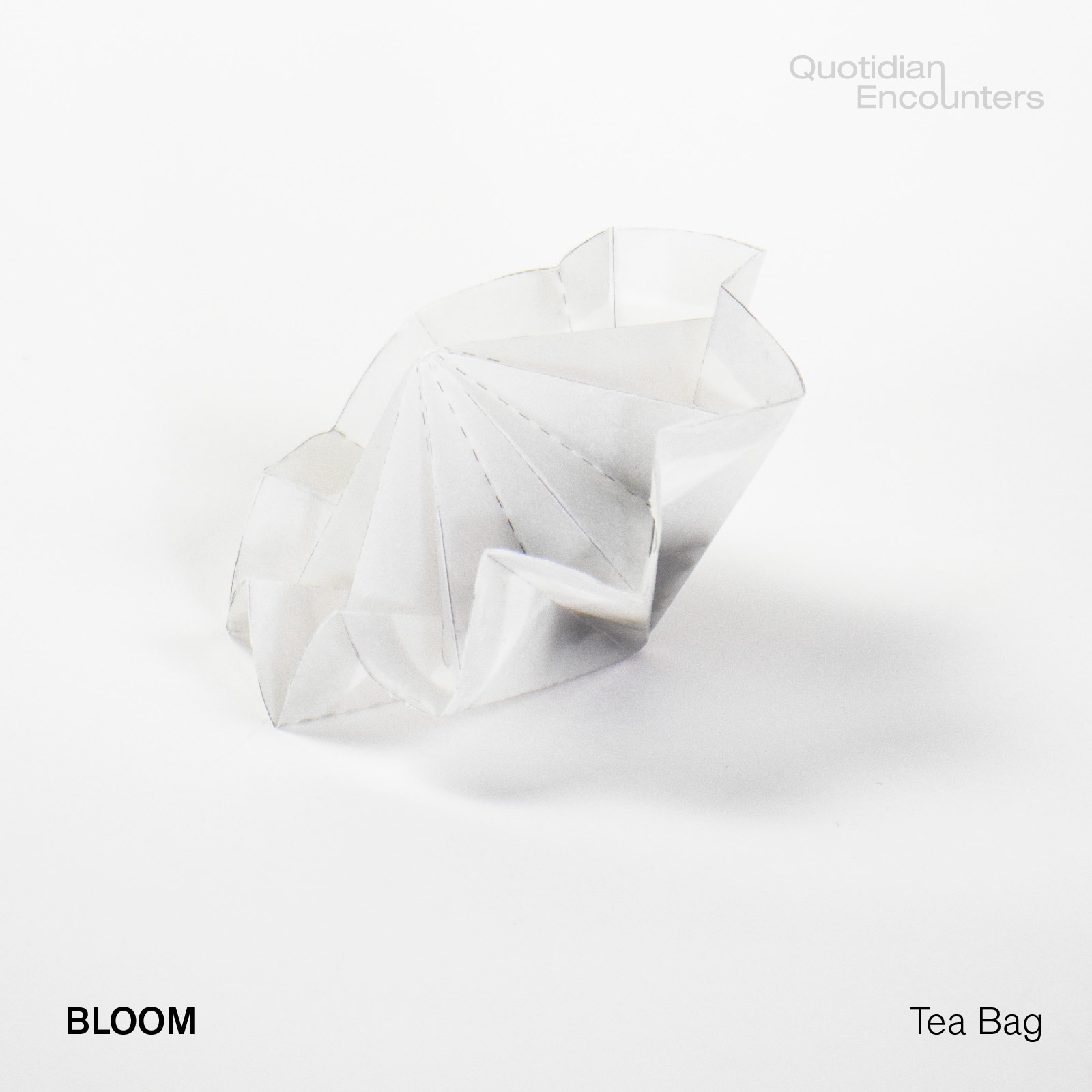
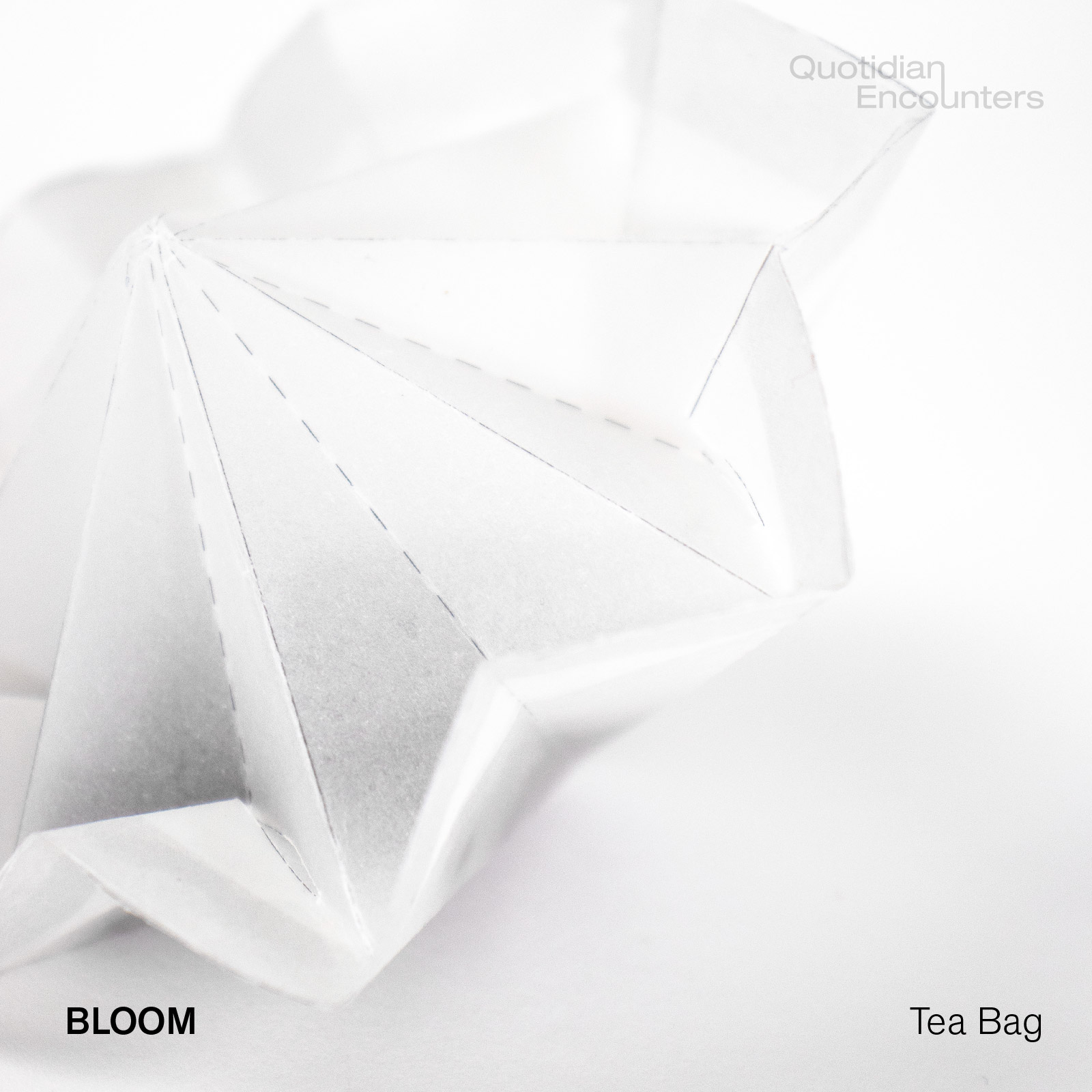
The Chinese blooming tea is a process in which dried tea leaves are tied into a ball -- once steeped, the tea leaves unravel, resembling blooming flowers. The tea bag design reflects the blooming motion of the traditional process through the flexible origami structure that uniformly expands when steeped.
WHISK
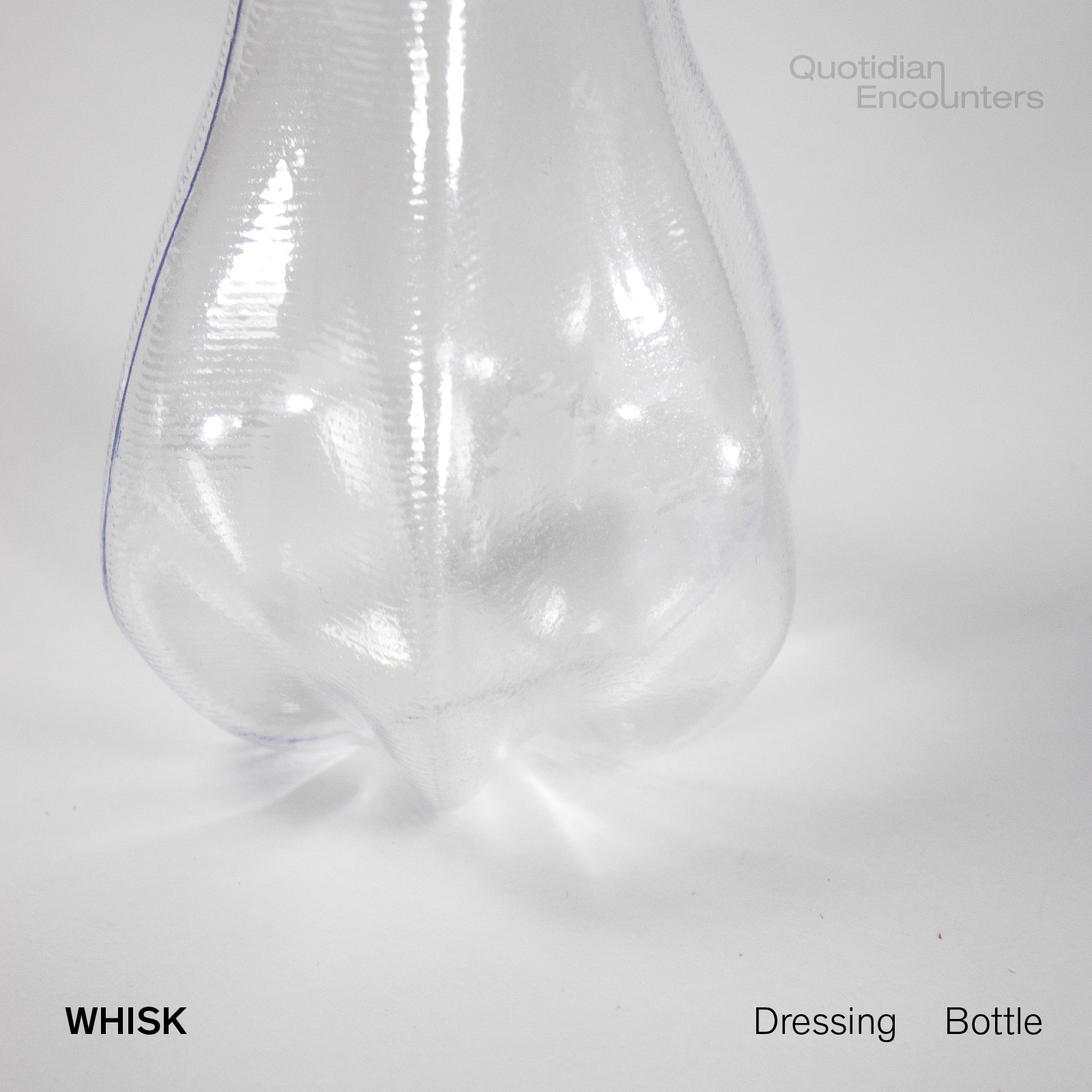

Informed by the culinary technique of using a balloon whisk to emulsify oil and liquid into a sauce, the design invites the user to interact with the bottle using the same circular stirring motion instead of shaking the whole bottle as one would do with a typical bottle. The whisk-like form facilitates the user to associate the bottle form with its culinary counterpart.